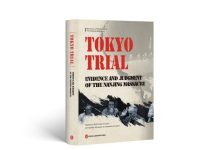By Mehreen Gul
After the six-week full-scale war between Azerbaijan and Armenia, the ceasefire agreement brought new overtures to the regional socio-economic and political landscape.The physical withdrawal of theArmenian army has marked the victory of Azerbaijan. The atrocities of the brutal Armenian forces can be witnessed in the wider area of Karabakh as the landmines have contaminated it. The Armenians have also declined to provide maps of the mines.In this context, for the socio-economic reconstruction of the liberated area, demining is the major task. Therefore, Baku leaves no stone unturned to reconstruct the area, assist the people, and demine the land. The article analyses the post-agreement scenario as Armenia remains stubborn to provide Azerbaijan from the landmines map of the liberated Karabakh region. The study also provides a brief analysis of rehabilitation of the Internally Displaced Persons (IDPs) back into the liberated Karabakh and seven other adjacent areas.
The ended territorial conflict of Karabakh between Azerbaijan and Armenia had witnessed the third-partymediation by Russia.It hassuccessfully played a major role as a stakeholder to resolve the prolonged conflict. InNovember 2020, a peace deal was signed between Azerbaijani President Ilham Aliyev, Armenian Primeminister NikolPashinyan andRussian President Vladimir Putin. It laid a foundation for the new post-liberation period thathad begun within Azerbaijan’s internationally recognized territories.
After the great victory of Azerbaijan, the year 2021 has brought forth many new opportunities. Azerbaijan has emerged as a potential regional country in the changing dynamics of the world.The country has the potential to revitalize regional alignments, cooperation, and multilateral relations. Under the visionary leadership of His ExcellencyPresident Ilham Aliyev, the country has emerged as a great nation and strong regional partner.
The Armenian dug landmines have resulted in many traumatic cases over the 25 years of conflict.The case study by the International Committee of Red Cross (ICRC) in the pre-liberated phase of 2019 revealed worrisome facts. ICRC mission in Nagorno-Karabakh has registered 747 cases of landmine victims, of which 59% are civilians. With a population of about 140,000, this number is striking given that most of the landmine survivors now live with some form of a permanent physical disability. These incidents propelled the displacement of families from the conflict areas towards other parts of the country. However,the three major clauses of the peace deal of November 2020are vital to establish sound diplomatic ties between Armenia and Azerbaijan. The clauses are mentioned below:
a- Maintenance of the land corridor between Armenia and Karabakh.
b- Return of the IDPs and refugees.
c- Establishment of a land transport corridor. This would reach across Armenia, between the Azerbaijani mainland and the Azerbaijani exclave of Nakhichevan (located at the west of Armenia).
Demining of the Liberated-Karabakh: A Humanitarian Cause
Since the early 1990s, the area was littered with mines and unexploded ammunition. It has been referred to as a ‘’Carpet of Landmines”. The worst affected areas are near Tartar, Aghdam, and the districts of Fuzuli and Cabrayil. Experts from the Azerbaijan Agency for Mine Action (ANAMA) have estimated that it could take up to 10 years to demine the liberated territory. After all these atrocities, Armenian has refused to provide any map. Many civilians and military personnel have been killed or injured due to these mines.Thousands of civilians were displaced from their homes over the years due to illegal occupation.It is a massive task to clear mines and ammunition from the battlefields in and around the Karabakh region.However, under the visionary leadership of H.E. President Ilham Aliyev, the prospects of quick rehabilitation of the area are high.
The U.S Agency for the International Development (USAID) has been working to assist the humanitarian cause ofclearances of landminesin the Karabakh.The current situation of demining the liberated areas has enabled the ANAMAto distinguish territories on two majoroperational zones;
a- The combat zones
b- The mined-areas
The demining operation continues over the 300 previous illegallyoccupied settlements. These include; Jabrayil, Fuzuli, Gubadli, Zangilan, and Shusha. By March 2021, ANAMA successfully explored more than 2000 anti-tank, 4000 anti-personal mines and neutralized them. However, the experts view that due to lack of cooperation by Armenia,operation durations in the combat zones can take around six years while the mined-areas would take more than ten years.In this aspect, three countries have become the major parties to assist Azerbaijan for the demining operations. The details are mentioned below:
a- Turkey: It isMEMATT- demining machinery. The operation is being carried out with the expertise of the Turkish squad of Special Mine Detection and Clearance Team (OMAT).
b- The AARDVARK Group:It is assisting with AARDVARK-a British production. It is participating in the mine clearance program,especially in Fuzuli.
–The author is Director, Center for Global & Strategic Studies (CGSS), Islamabad & Eurasian Expert.




